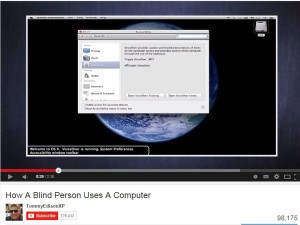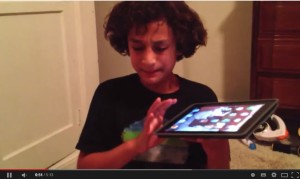Customising mainstream technology for people with vision impairment enables them to access the same information as their peers. With the increasing availability of technology, modifications to the device can be built in, free access technologies or commercial software or hardware that will enable access to information.
Computers:
YouTube How a person who is blind uses a computer
Tablets:
iPhones
Although ‘touch screen technology can present significant barriers for blind users” (Meng Ee WongTan, 2012, p. 646) screen reading capabilities such as Voiceover are able to help students navigate the touch screen, without the need to see it. Custom gestures can be designed, which along with the rotor function can also be used as to access links, flick between word by word to character by character, find headers, or links not visited. Dictation is a function that enables you to speak messages and they will be converted to texts, emails or notes. Siri is Apple’s “intelligent assistant” that can send messages, emails, search google, phone people and search the internet for answers to questions needed in the classroom. A number apps, both specifically designed for blind users (such as as Colour ID, Digit eyes and money reader) along with generic applications provide learning opportunities to meet the National Curriculum. Bluetooth keyboards or refreshable braille display devices can be used to be able to enter and retrieve data. iPhones also have mono audio which allows you to have both audio channels playing in one ear, so that the other ear is left free to hear what is going on in the classroom. All of these functions allow students to use the device as a mobile and portable computer to access the curriculum, while at the same time using the same technology as their peers.
References:
Meng Ee WongTan, S. S. K. (2012). Teaching the Benefits of Smart Phone Technology to Blind Consumers: Exploring the Potential of the iPhone. Journal of Visual Impairment & Blindness, 106(10), 646-650.



